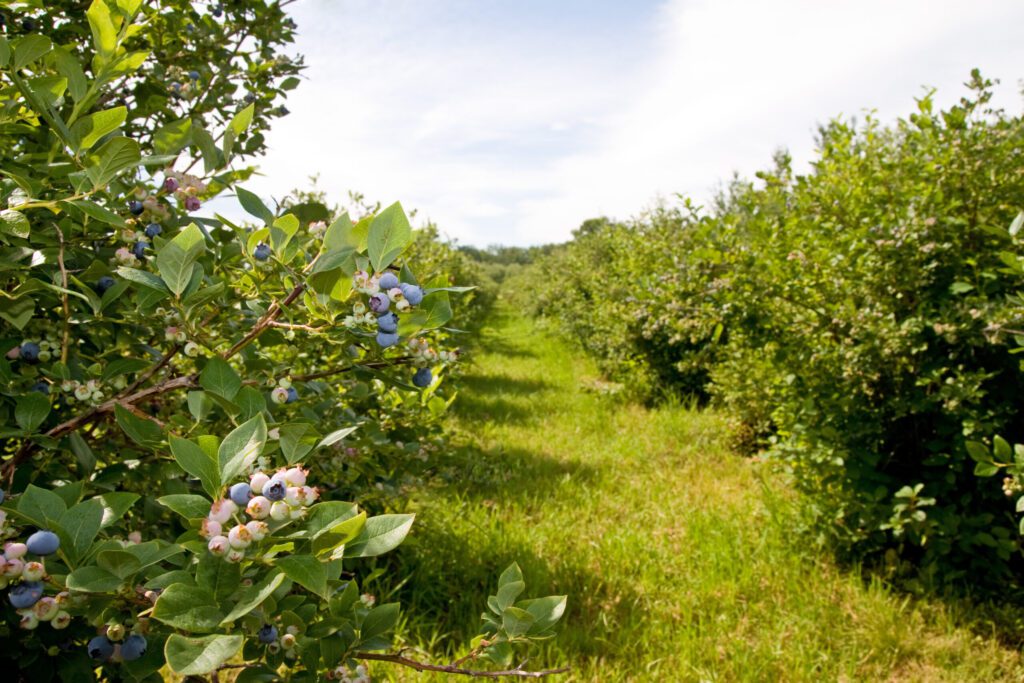Florida Growers Produce 21.5 Million Pounds, but Some Counties Suffered Losses
by PAUL CATALA
As the Florida blueberry season comes to a close, one thing is certain: It wasn’t the best season ever, but it also wasn’t the worst.
Doug Phillips, University of Florida Institute of Food and Agricultural Sciences blueberry extension coordinator, describes the 2022 harvest as “slightly above average” for the state. The harvest season stretches from the beginning of March through early May.
With about 900 blueberry farms across the state, employing roughly 2,500 workers and generating an annual economic impact of about $295 million, blueberry farming isn’t exactly a niche crop in Florida anymore.
And that’s as blueberry imports from countries such as Argentina, Canada, Chile, Mexico, and Peru have increased by more than 60 percent since 2015. Mexico’s market share has increased by 2,100 percent since 2009, according to a report by the Florida Department of Agriculture and Consumer Services
Phillips, who has spent more than four years with IFAS at its research center in Balm, says Florida blueberry farms currently amount to about 5,500 acres and produced about 21.5 million pounds through May 10. He says it was about the same in 2021.
According to the Florida Farm Bureau, Florida ranks eighth in the country in blueberry production. The state also grew and harvested the first U.S.-produced blueberries to reach the domestic market. Most Florida-grown blueberries come from Polk and Alachua counties, which have many of the largest blueberry farms in acreage. Other leading counties are Putnam and others in the Panhandle. The Central Florida area including Polk, Orange, Pasco, Hernando, and Hillsborough counties add up to approximately 30 percent of Florida’s total blueberry acreage, according to IFAS.
The numbers, although not staggering, are solid, says Phillips, especially as markets open back up with a slight letdown in coronavirus pandemic restrictions. He says there was some freeze concern during the winter that didn’t materialize, due to no extended periods of consecutive freeze days and farmers shielding blueberries with overhead irrigation.
“Production-wise, I think most growers would say they had a pretty good year. The overall numbers for the state were pretty comparable to last year. That shows it was a good season production-wise,” he says.
Not all areas of the state had the same experiences, though. A significant hailstorm in Highlands and DeSoto counties left growers reeling.
On April 4, just two weeks into the harvest season, a storm swept through Sebring blueberry farmer Floyd Lilyquist’s 7½ acres with silver dollar-sized hail. The storm caused a 75 percent crop loss and left him with only about two weeks of picking.
“It would’ve been a good year, 2021 was one of our best years,” Lilyquist says.
“But due to (the storm), it was terrible for me; almost no crops. I was shocked and in disbelief for a couple of weeks. The fields were devastated, but you pick up the pieces and move on. I’m looking forward to next year,” he says.
Another prominent blueberry grower, Kyle Straughn of the 750-acre Straughn Farms in Waldo, like Phillips, also calls the 2022 harvest season an average year. He says his farm had its highest yield ever because he planted new blueberry bushes.
Straughn says production totals across the country were lower than the past two years due to less foot traffic in stores and the price of gasoline.
“With that said, pricing was down from last year, it’s about average for the times that we’re in, but our volume was up based on all the replanting that we’ve been doing,” he says.
Even though production-wise, this year’s harvest was just above average over the past 10 to 12 seasons, Phillips says it’s difficult to predict how next year’s harvest will turn out, but he expects blueberry acreage to be about the same.
“There are so many variables involved, it’s impossible to forecast,” he says. “The weather is big, disease/insect damage is a variable, then the market is a huge variable due to importation of blueberries into the U.S. That impacts Florida growers,” says Phillips, who has a master’s degree in horticultural science through the University of Florida’s blueberry breeding program. “It’s just wait-and-see.”

